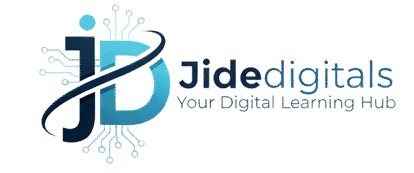AI Apps I Actually Use Every Day | My Productivity Stack
Let’s be honest: the AI space is noisy. Every day, a new “revolutionary” tool promises to change your life, only to end up forgotten in a tab you never reopen. It’s easy to become cynical and write it all off as a gimmick.
But as a digital strategist and content creator who has tested hundreds of these tools over the past few years, I can tell you that a select few have genuinely earned a permanent place in my daily workflow. They’ve moved from being novelties to becoming as essential as my word processor or calendar.
This isn’t a list of every AI app under the sun. This is a curated, honest look at the AI apps I actually use every day to be more productive, creative, and efficient. These are the tools that provide tangible value, saving me hours each week and elevating the quality of my work.
What Makes an AI App “Daily Driver” Material?
Before we dive in, it’s worth explaining my criteria. For an app to make this list, it must be:
- Reliably Useful: It solves a specific, recurring problem.
- Frictionless: It integrates smoothly into my existing workflow without being a hassle.
- Consistently Accurate: Its output is high-quality and requires minimal correction.
- Value for Time/Price: The time it saves or the quality it adds justifies its cost (whether time for a free tool or money for a paid one).
With that framework in mind, here are my five indispensable practical AI tools for my daily workflow.
1. Claude: The Idea Partner and Writing Editor
While ChatGPT often grabs the headlines, Anthropic’s Claude has become my go-to AI for deep thinking, complex document analysis, and nuanced writing assistance. Its large context window and thoughtful response style make it feel more like a collaborative partner.
How I Use It Daily:
- Brainstorming & Structuring: I dump a raw, messy idea into Claude and ask it to help me outline blog posts, create presentation structures, or generate creative angles for a topic. It’s exceptional at taking chaos and creating order.
- Long-Form Document Review: I upload my finished draft articles (like this one) and ask Claude to critique them. It provides feedback on flow, tone, consistency, and argument strength, acting as a first-pass editor.
- Interacting with Complex Documents: You can upload PDFs, Word docs, and spreadsheets. I use this daily to summarize lengthy reports, extract key data from a PDF, or rewrite a dense paragraph from a source into clearer language.
Why It’s More Than a Gimmick:
Claude doesn’t just generate text; it comprehends and iterates on it. This depth of understanding is what makes it a truly useful AI app for professionals who work with complex information.
2. ChatGPT: The Swift First Draft and Problem Solver
Yes, it’s the obvious one, but for good reason. OpenAI’s ChatGPT (I use the Plus version with GPT-4) is the Swiss Army knife of my AI toolkit. Its speed and versatility make it irreplaceable for a myriad of small, daily tasks.
How I Use It Daily:
- Overcoming the Blank Page: Whenever I’m stuck starting an email, a social media post, or a section of an article, I use ChatGPT to generate a first draft. It’s not about publishing its output verbatim; it’s about sparking my own thinking and saving the mental energy of starting from zero.
- Coding Assistance: As a non-expert coder, I use it daily for writing simple Python scripts for data automation, debugging errors, or understanding complex code snippets. It’s like having a patient tutor on standby.
- Rapid Research & Explanation: I use it to get quick explanations of concepts, generate ideas for metaphors, or create simple lists and templates. It’s my first stop for “how do I explain X simply?”
Why It’s More Than a Gimmick:
ChatGPT’s value is in its raw speed and breadth of knowledge. It’s the fastest way to get from “I need to do this” to a solid starting point, making it one of the best AI tools for content creation and problem-solving.
3. Otter.ai: The Meeting Librarian
How many great ideas are lost in the shuffle of a fast-paced meeting? Otter.ai solves this by providing real-time, accurate transcription and note-taking. It has fundamentally changed how I engage in meetings.
How I Use It Daily:
- Active Listening, Not frantic Notetaking: I join client calls, internal syncs, and interviews with Otter.ai running. Knowing everything is being captured verbatim allows me to be fully present in the conversation instead of being distracted by scribbling notes.
- Post-Meeting Action Items: Immediately after a meeting, Otter.ai provides a full transcript. I can search for keywords like “action item,” “to-do,” or “next step” and instantly generate a summary of who is responsible for what. This saves me at least 30 minutes of meeting recap work per day.
- Knowledge Base: Otter.ai stores all transcripts. It becomes a searchable archive of every decision and idea discussed, which is invaluable for onboarding new team members or settling a “what did we decide?” debate.
Why It’s More Than a Gimmick:
Otter.ai directly enhances human interaction by removing a tedious task. It’s not about replacing participation; it’s about augmenting it, ensuring no valuable insight is ever lost. It’s a critical AI software for efficiency in communication.
4. Notion AI: The Integrated Workflow Accelerator
Notion is already my hub for everything—notes, projects, wikis, and databases. The built-in Notion AI feature is powerful because it works in the context of all my existing information, eliminating the need to copy-paste between tabs.
How I Use It Daily:
- Summarizing Long Notes: I can highlight a long meeting note from Otter.ai (which is pasted into Notion) and instantly get a bulleted summary.
- Changing Tone: I write a draft of an email or a message, and with one click, I can ask Notion AI to make it more professional, concise, or friendly.
- Generating Content from Databases: If I have a database of client names and projects, I can ask Notion AI to “generate a newsletter intro based on these completed projects listed below.” It pulls from the data right there on the page.
Why It’s More Than a Gimmick:
The magic is in the integration. Notion AI doesn’t exist in a silo; it’s woven into the fabric of my entire workspace. This context-awareness makes its output more relevant and saves an immense amount of time, truly embodying what productive AI applications should be.
5. Grammarly: The Invisible Polishing Partner
Grammarly has been around so long we almost forget it’s AI. But its advanced algorithms for checking clarity, tone, and engagement have become indispensable for ensuring everything I write is clear and professional.
How I Use It Daily:
- Real-Time Editing: It works everywhere—in my email client, Google Docs, WordPress editor, and social media platforms. It catches typos and awkward phrasing in real-time before I hit “send” or “publish.”
- Tone Consistency: I often write for different audiences. Grammarly’s tone detector helps me ensure a client email doesn’t sound too casual and a social media post doesn’t sound too stiff.
- Clarity Improvements: It goes beyond grammar to suggest more concise wording and clearer sentence structures, which is crucial for making complex topics understandable.
Why It’s More Than a Gimmick:
Grammarly is the ultimate set of training wheels that you never outgrow. It’s a seamless, always-on editor that ensures my public-facing communication is error-free and effective, protecting my professional reputation.
Key Takeaways and Final Thoughts
Integrating these productive AI applications isn’t about replacing human skill; it’s about augmenting it. These tools handle the tedious, time-consuming parts of my work, freeing me up to focus on strategy, creativity, and genuine connection—the things that humans do best.
The common thread with these five apps is that they solve specific problems without creating new ones. They are reliable, accurate, and, most importantly, genuinely useful.
- For Thinking & Writing: Claude & ChatGPT
- For Meeting & Communication: Otter.ai & Grammarly
- For Integrated Workflow: Notion AI
The key to leveraging AI successfully is to be intentional. Don’t use it because it’s trendy; use it because it solves a real problem for you. Start with one pain point in your day and see if there’s a tool that can alleviate it.
What about you? What are the AI apps you actually use every day that have moved beyond being a gimmick? Share your favorites in the comments below—I’m always looking for new tools to test and explore
Read also: The 10 Best Premiere Pro Plugins That Transformed My Editing Workflow

